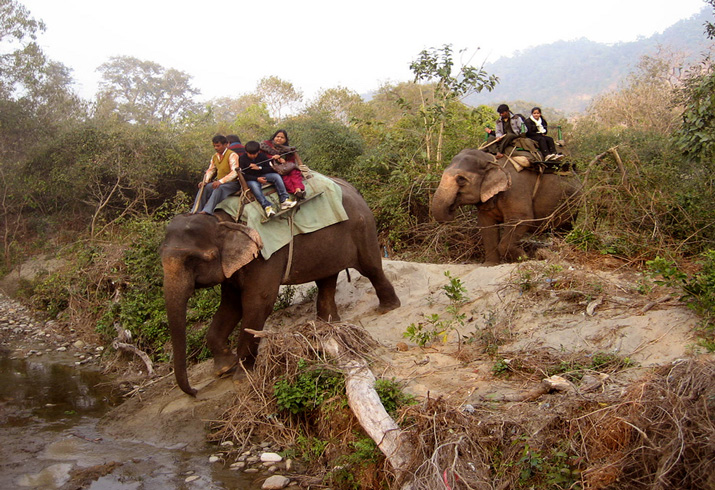
The geographical diversity of India has resulted in rich flora and fauna. Thus, the fact has resulted in marking some of the areas protected and famed as wildlife sanctuaries and national parks. These wildlife areas are praised for maintaining the ecological balance and providing shelter to various endangered and conserved species of flora and fauna.
Further, wildlife sanctuaries and national parks also instill a sense of respect in the people for the various kinds of animals that reside in them. Additionally, the vital role played by them in rehabilitating injured wildlife can never be overemphasized. It is therefore, imperative that greater awareness exists among the people regarding the various problems facing wildlife. National parks play a big role in spreading that awareness.
Here is a list of popular wildlife sanctuaries and national parks that are worth a visit and thus assure to cater to the interest of wildlife enthusiasts.
Jim Corbett National Park

Jim Corbett National Park takes pride for inaugurating Project Tiger in India. The program focused on the conservation of the population of Tigers. Apart from Jeep and Elephant Safari in the national part, the visitors can also take pleasure in various activities such as fishing, rock-climbing, river-crossing, rappelling, slithering and rafting. The rich flora and fauna of the national park is one of the major factors that make it a sought-after travel destination for wildlife enthusiasts.
This massive park is also famous for hosting more than 25 species of reptiles, 585 kinds of birds and over 50 varieties of mammal species. Various kinds of crocodiles can also be found here. The richness of its wildlife is matched equally by its lush vegetation. Apart from 51 kinds of shrubs, 110 different species of trees and more than 30 kinds of bamboo trees, one can also find greenish grass here.
[ Check out more info about Jim Corbett National Park ]
Highlights:
- State: Uttarakhand
- Address: Dhikala, Rankihet Raod, Ramnagar, Pin- 244715, Uttarakhand, India
- Area: 1,319 sq km (509 sq miles)
- Year of Establishment: 1936
- Forest Types: Sal forests, Anogeissus-Acacia catechu forests
- Flora: Jamun, Diospyros Tomentosa, Mallotus Philippensis
- Fauna: Leopard Cat, Hog Deer, Sloth, Himalayan Goral
- Best Time to Visit: January to March
Kaziranga National Park
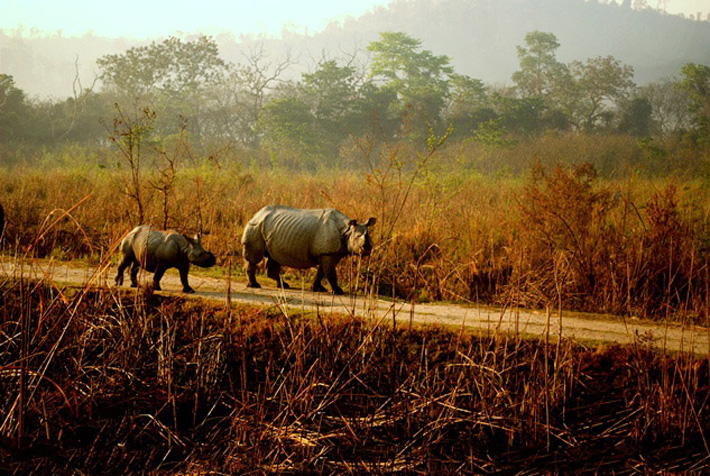
Kaziranga National Park is listed as a world heritage site for providing shelter to almost two-thirds of the world’s Great One-horned Rhinoceroses. The national park is also recognized as a major Bird Area by Birdlife International for protecting the avifaunal species. Being located in Assam, the national park is acclaimed for providing excellent option for wildlife enthusiasts visit eastern regions of India.
On a lucky day, a visitor can come across a parade of elephants quenching their thirst or wandering about in the forest. Apart from the Wild Buffalo, with their incredible horns, one can be sure of spotting a herd of Hog Deer, Sambar and Swamp Deer. Nothing puts that smile on the face like spotting the Hornbills, Cranes and Pallas Fishing Eagle. The biodiversity is in itself worth admiring.
[Plan your wildlife holidays to India with our customized packages.]
Highlights:
- State: Assam
- Address: National Highway -37, Bokakhat, Pin-785609, Assam, India
- Area: 430 sq.kms.
- Year of Establishment: 1974
- Forest Types: Grasslands, Tropical Wet Evergreen Forests, Tropical Semi-Evergreen Forests
- Flora: Albizia Procera, Duabanga Grandiflora, Lagerstroemia Speciosa, Crateva Unilocularis
- Fauna: One-Horned Rhinoceros, Asiatic Elephants, Wild Buffaloes, Royal Bengal Tiger
- Best Time to Visit: November to April
Ranthambore National Park
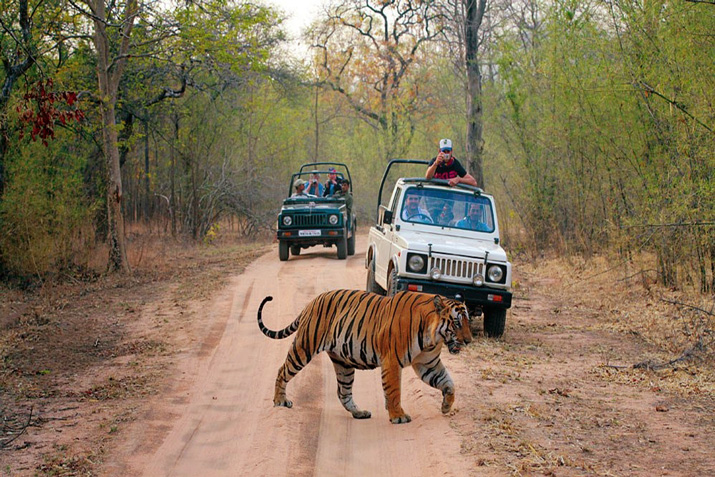
Ranthambore National Park is another wildlife attraction, which is acclaimed for providing shelter to a considerable population of Tigers. The National Park is serving shelter to almost 300 species of trees and 50 aquatic plants, together with 272 species of birds and 12 of reptiles including the Marsh Crocodile & amphibians. The count of mammals in the park is of about 30 species. Some of the attractions in and around the park are Ranthambhore Fort, Bakula, Kachida Valley, Lakarda Anantpura and Jogi Mahal. Visitors, along with wildlife photography, can enjoy wildlife safari.
Apart from tigers and marsh crocodiles, one can also spot the elusive Indian Wolf. Naturalists and tourists alike will find much to marvel here. The fabulous background created by the dhok, fig and banyan trees is further embellished by the presence of the chital, the “nilgai” (blue antelope), rhesus macaque and an amazing variety of birds.
The Ranthambore National Park is one of the best weekend getaway options from Delhi. There also are safaris organized in the park for visitors. Read Ranthambore Travel Guide here.
Highlights:
- State: Rajasthan
- Address: Sawai Madhopur, Rajasthan
- Area: 392 sq.kms
- Year of Establishment: 1980
- Forest Types: Dry Deciduous Forests, Open Grassy Meadow
- Flora: Mangifera Indica, Ficus Benghalensis, Tamarindicus Indica, Prosopis Specigera
- Fauna: Leopard,Chital, Sambar, Hyena, Nilgai, Wild Boar
- Best Time to Visit: November to March
Bandipur National Park
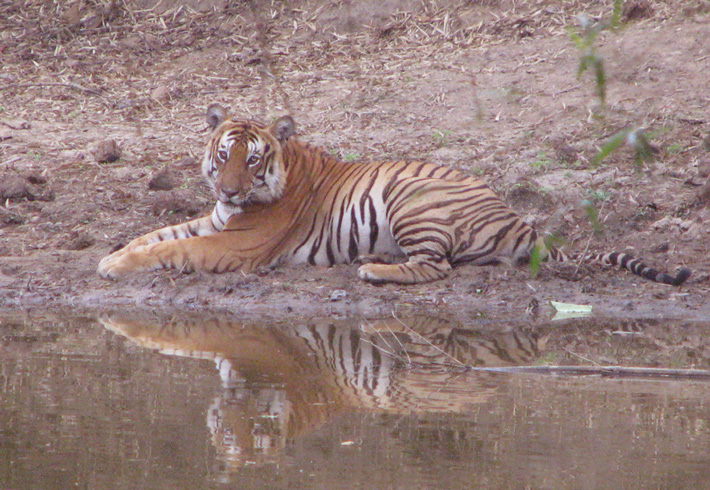
The Bandipur National Park is acclaimed for providing shelter to various species of India’s endangered wildlife. In addition to this, the national park, together with the Nagarhole National Park, Wayanad Wildlife Sanctuary and Mudumalai National Park, make the part of the largest protected area of South India, the Nilgiri Biosphere Reserve. Visitors on Ooty tour can also take a small trip to the Bandipur National Park to explore the rich flora and fauna.
At Bandipur National Park, expect the unexpected! Spotting an elusive animal here, watching a crane take off there – sure, nothing beats that. However, how about exploring the park on an elephant’s back, enjoying every bit of the bumpy ride as it brings you face to face with unexpected encounters. Witness the forest come alive with the dance of the peacock, or, hold your breath as the enormous bison passes you by and grin back at that crocodile which basks lovingly in the sun, with that ever present grin!
Highlights:
- State: Karnataka
- Address: Ooty Road, Bandipur, Mysore, Karnataka 571121, India
- Area: 874 sq.kms
- Year of Establishment: 1974
- Forest Types: Dry Deciduous Forests, Tropical Mixed Deciduous Forests
- Flora: Rosewood, Teak, Sandalwood, Banyan
- Fauna: Panther, Tigers, Chital, Four-Horned Antelope
- Best Time to Visit: July and September-November
Parambikulam Wildlife Sanctuary
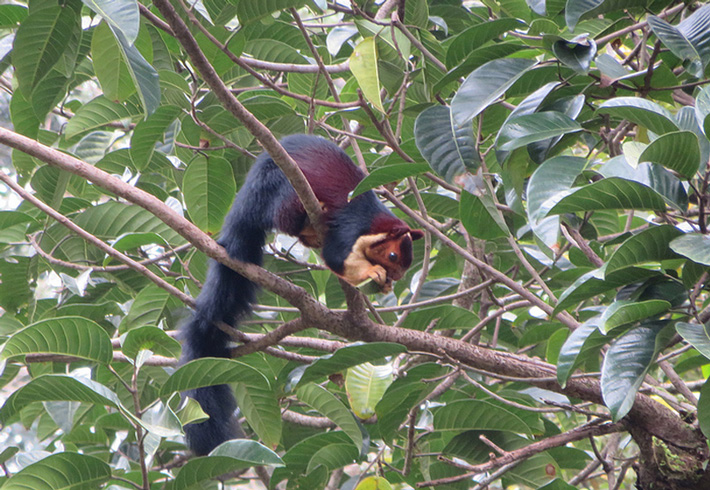
Parambikulam Wildlife Sanctuary has been proposed as a world heritage site by the UNESCO World Heritage Committee. In 2010, the sanctuary as declared as the part of Parambiculam Tiger Reserve. The wildlife sanctuary is one of the best spot for wildlife enthusiasts to enjoy rich flora and fauna. The visitors are praised for providing shelter to various endangered and conserved species.
Situated in Chittur taluk of Palakkad district, Parambikulam Wildlife Sanctuary boasts of scientifically managed teak plantations of the world, besides housing the world’s oldest and tallest oak trees. The flora here ranges from evergreen forests, semi-evergreen, Shola forests and moist deciduous montane grasslands.
The diverse wildlife flourishes here due to the mosaic vegetation found in the forests. One can find about 16 species of amphibians, 61 species of reptiles, 47 species of fish, 39 species of mammals and more than 1000 species of insects. Here, one is sure to come across endangered freshwater crocodiles, Otters, mongoose, lion-tailed macaques, porcupines etc.
Highlights:
- State: Kerala
- Address: Anappady, Thunakadavu P.O, Parambikulam, Palakkad, Muthalamada South, Kerala 678661
- Area: 643.66 sq km
- Year of Establishment: 1973
- Flora: Teak, Neem, Sandalwood, Rosewood
- Fauna: Lion-Tailed Macaques, Wild Boar, Leopard
- Best Time to Visit: August to January
Bandhavgarh National Park
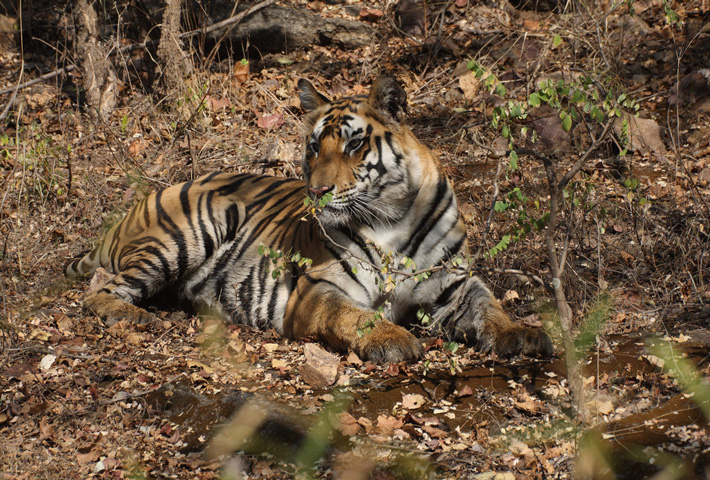
Bandhavgarh National Park is acclaimed in India for its large biodiversity. The national park is also said to host the highest density of the population of tigers in India. Moreover, the park is a treat for wildlife photographers. To explore the best of the national park it is advised to include visit to some of the attractions in and around the park. Some of the popular attractions are Bandhagarh Fort, Baghel Museum, Village Tala, and Fossil National Park. The ecosystem of the national park also leaves the visitor spellbound. Read a complete travel guide on Bandhavgarh National Park.
The diversity of wildlife found here is indeed amazing. This park is home to about more than 250 species of mammals and 250 species of birds. While the carnivores range from the Striped Hyena and Jungle Cat to Sloth Bear and Jungle Fox, the Gaur (Indian bison) is a prime attraction here. The foliage found here is of the dry deciduous type.
Highlights:
- State: Madhya Pradesh
- Address: Tala, Umaria (M.P.), India, Pin Code – 484 661.
- Area: 446 sq.kms
- Year of Establishment: 1968
- Forest Types: Sal Forest, West Gangetic Moist Mixed Deciduous Forests, Moist Peninsular Low Level Sal
- Flora: Anogeissus Latifolia, Butea Monosperma, Grewia Tilifolia, Terminalia Tomentosa
- Fauna: Tiger, Panther, Deer
- Best Time to Visit: October to April
Gir National Park and Sasan Gir Sanctuary
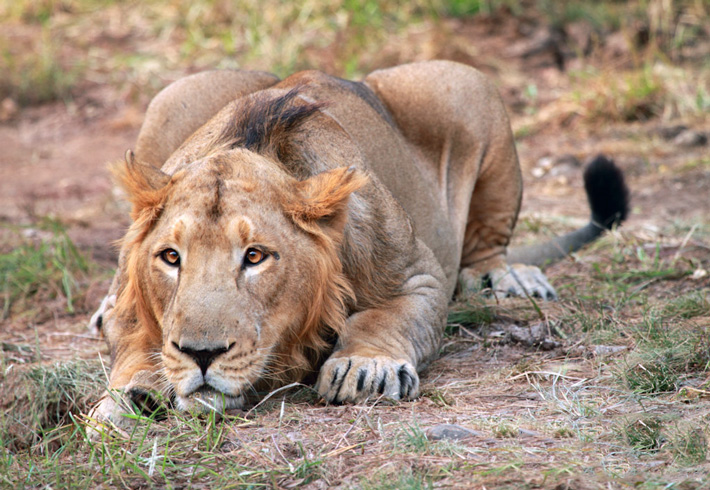
Gir National Park & Sasan Gir Sanctuary is famed for providing shelter to the Asiatic Lions. The national park & sanctuary is also acclaimed as one of the major protected areas in Asia. The survey of 2010 also recorded the count of Asiatic lions to be 411, which was as increase of 52 lions as compared to the records of 2005.
The flora here is defined by densely forested valleys, high ridges and rugged hills. More than half of the forested area of the park is covered with teak forest, with the presence of other trees like khair, amla and others. It’s quite fascinating to watch the “chital” or Indian spotted deer, “chausingha” or the four-horned antelope, as well as the blackbuck, the fastest of the Indian antelope. The most popular fascinations here are the rusty spotted cat, honey badger and the wild boars.
Highlights:
- State: Gujarat
- Address: Junagadh District, Gir Somnath District and Amreli District Gujarat, India
- Area: 1412 sq.kms.
- Year of Establishment: 1965
- Forest Types: Mixed Deciduous Forest
- Flora: Timru, Amla, Babul, Moledi, Bahedo
- Fauna: Asiatic Lions, Spotted Deer, Chinkara, Blue Bull, Chousingha
- Best Time to Visit: late-November to early-March
Periyar National Park
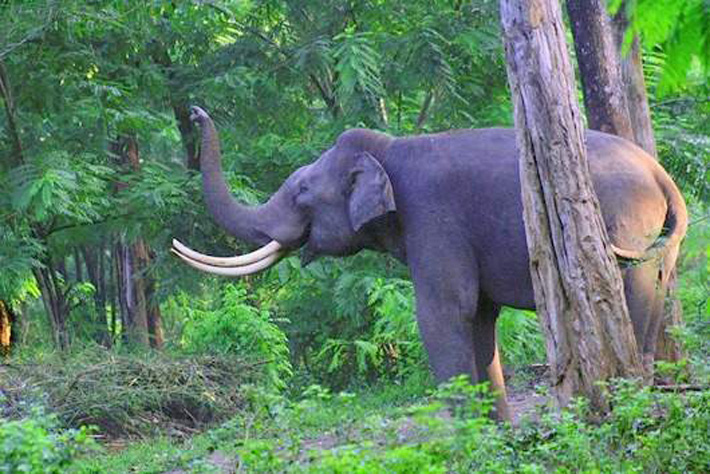
Periyar National Park, located in Kerala, is acknowledged as one of the major elephant reserve and a tiger reserve in India. Additionally, the Periyar National Park is the only national park in India that is open for visitors during monsoon. Do not miss to visit Kumily and Cradomom Hills to make your visit a memorable experience. Boat Cruises is also one of the major attractions in the national park. The nature is at its best and thus, wins the heart of wildlife enthusiasts.
Periyar Tiger Reserve is a repository of natural wealth. The flora here consists of over 1965 flowering plants, 143 species of orchids and 171 grass species. Further, Podocarpus wallichianus, the only South Indian confiner, grows in the forests here. The fauna here includes mammals such as Indian wild dog, Nilgiri Tahr, Nilgiri langur, birds like Malabar trogon, the Malabar grey hornbill and amphibians such as the Malabar gliding frog.
Read about most beautiful tourist places to visit in Kerala.
Highlights:
- State: Kerala
- Address: Idukki, Thekkady, Kerala 685509
- Area: 305 sq km
- Year of Establishment: 1982
- Forest Types: Deciduous Forests
- Flora: Cardamom, Eucalyptus, Grasslands, Taxa, Teak
- Fauna: Royal Bengal Tigers, Stripe-Necked Mongoose, Sambar, Lion-Tailed Macaque
- Best Time to Visit: October and June
Dandeli Wildlife Sanctuary
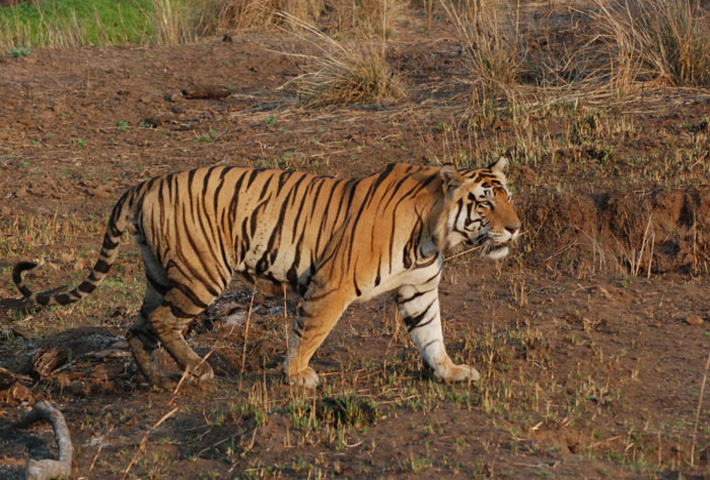
Dandeli Wildlife Sanctuary is praised for providing excellent wildlife attraction in India. The sanctuary provides shelter to various endangered and conserved species of flora and fauna. On your visit to Mumbai, take out some time to explore the best of nature. The sanctuary is located at a distance of 580 km from Mumbai, there is conveyance option available to ensure comfortable travelling.
The wildlife species here is very diverse. Bonnet Macaque, Malabar giant squirrel, sloth bear and pangolin, besides the Black Panther and elephants, can be found here. Various kinds of reptiles and more than 200 species of birds can be found here. This place is also one of the most popular bird watching destinations in India.
Highlights:
- State: Karnataka
- Address: Dandeli – 581 325, Karnataka, India
- Area: 834.16 sq km
- Year of Establishment: 1956
- Forest Types: Moist Deciduous, Semi Evergreen Types
- Flora: Bamboos, Teak
- Fauna: Spotted & Mouse Deer, Sloth Bear, Panther, Tiger, Gaur,
- Best Time to Visit: March to October
Kanha National Park
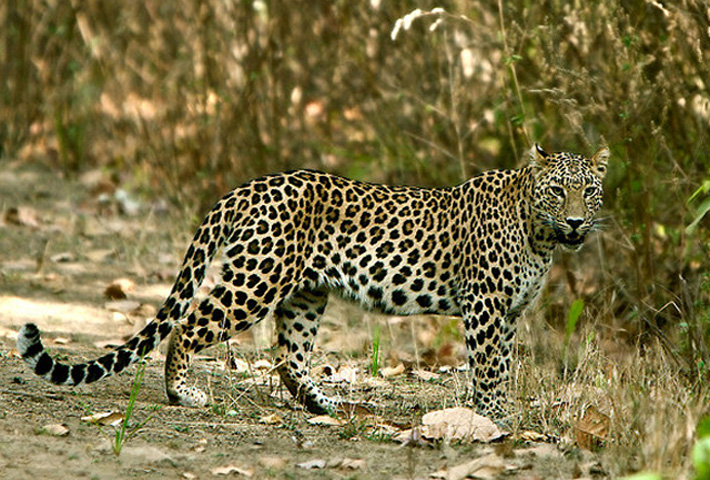
Kanha National Park has served as a source of inspiration for Jungle Book – the novel, written by Rudyard Kipling. The national park features grassy meadows, lush sal & bamboo forests, and ravines of Kanha. The national park also provides shelter to various endangered and conserved species of flora and fauna. This is another very popular national park, located in the Indian state of Madhya Pradesh.
Kanha National Park is a lowland forest that contains a mixture of Sal and other mixed forest trees interspersed with several meadows. This park is home to a rich and flourishing wildlife, from mammals and reptiles to fishes and birds. The reserve, with its 300 species of birds, attracts bird-watchers in great numbers, with the bamboo and grassy forests being the perfect spots for bird-watching. Read Kanha National Park travel guide.
Highlights:
- State: Madhya Pradesh
- Address: Mangitola Mukki Gate, Mukki, SH 11, Gunegaon, Madhya Pradesh – 481111
- Area: 1945 sq km
- Year of Establishment: 1955
- Forest Types: Tropical Moist Dry Deciduous Type
- Flora: Acacia Torta, Anogeissus Latifolia, Buchanania Lanzan, Butea Monosperma
- Fauna: Tiger, Gaur, Sambhar, Chital, Python, Leopard, Porcupine
- Best Time to Visit: October to June


Nice website for students acknowledge.
The information was awesome it really helped me in my quiz and to travel there